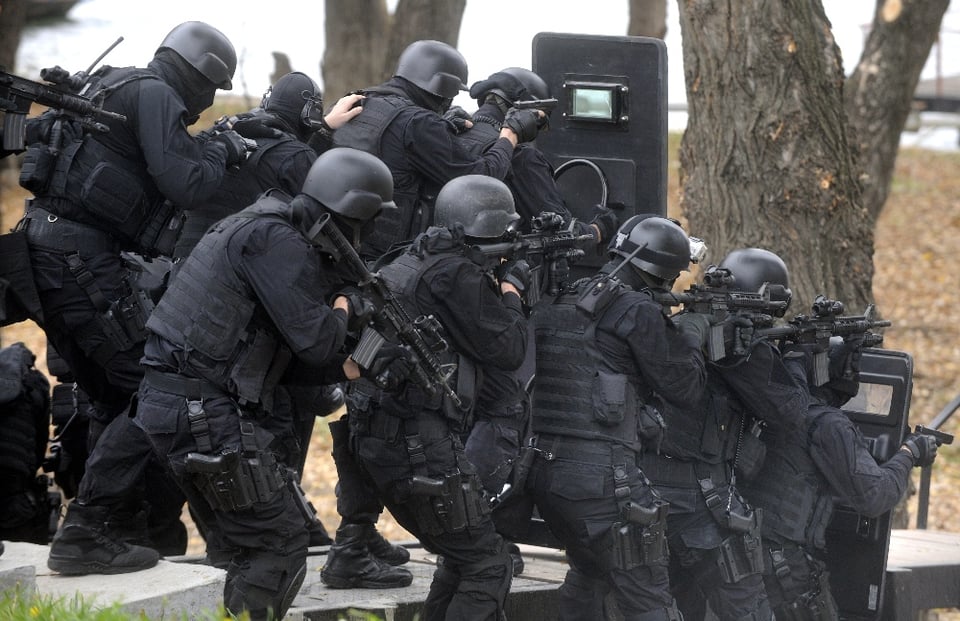Let’s imagine for a moment that your team does not deploy negotiators on high-risk warrant service as was advocated in Part 1 of this series and the warrant service is compromised at the breach. Having tactical operators versed in the basics of crisis negotiation can be an effective stop-gap measure until your negotiators can respond.
Progressive tactical teams are exposing their team members to the principles of crisis negotiations to include the use of Active Listening skills to establish rapport and diffuse high-risk situations. Some even mandate that their team members attend a negotiator school. I am not suggesting they receive in depth training but they should have a functional knowledge of how crisis and emotions impede rational thinking and what they should say to when the person on the other side of the door refuses to come out.
Here are things for an operator to keep in mind if forced to negotiate through a door with a barricaded suspect.
- The suspect is in a crisis state due to fear, anxiety, anger, confusion or any combination of those. Demonstrating empathy by labeling those feelings is important in order to return him to a normal functioning level. Emotion labeling is simply beginning your statement with, “You sound…You seem…I hear… Sounds like”.
- Give your name and use his. People are more susceptible to influence if they like you. The sooner you break down the wall of unfamiliarity, the sooner the suspect will begin to “like” you. I am not talking about hanging-out-with-each-other-on-the-weekend “like” but using names will personalize you. A bond will form quicker between the suspect and “Bill” then it will between “Officer Smith” and the suspect.
- Ask Open-Ended Questions (OEQs). Everything you will need to know in order to move him you can find out through asking OEQs. “What’s causing you to…..? “Help me understand….? How would you like this work out?”
- Expect silence from the other side of the door. He undoubtedly has a lot on his mind and may be focusing on his interior dialogue. If the operator is certain that there is movement on the other side of the door, attempts at dialogue should continue. For example, he or she might say, “I can see why you would have a lot on your mind now. You’re probably wondering how you got into this and more importantly, how you get out. I get that. Take some time and get your thoughts together and when you’re ready, we can talk about how we are going to get you out of there.”
- Your delivery is more important than any single phrase you say. Keep your voice lower, slower and calmer than the suspect. Use it to subtly reward or discourage depending on the circumstance.
- The suspect is a captive audience. As such, operators can be more directed with him, forcing him to check his reality from time to time. It is ok let them know that, “No one out here has any intention of hurting you but you know that we can’t go way.”
- Review the surrender process and re-assure the suspect.
- Solicit a public promise from the suspect. Get the words, “I promise to…….” Research has shown that when people want to be viewed as consistent in word and deed. The public promise paints them into a corner to conform and honor the promise.
- Never sacrifice your safety for the purpose of dialogue. Shoot or talk but don’t try to do them both at the same time.
Tactical operators with a basic understanding of these considerations will keep the situation from getting any worse and in fact, history has shown they have been able to effectively negotiate a surrender before the negotiators arrive. I am by no means advocating cross training of operators and negotiators to the extent that one thinks they don’t need the other. I view the basic exposure of tactical operators to negotiations principles as prudent as teaching them basic combat medical care. Operators receive basic medical training despite the fact that most teams now operate with tactical paramedics as a part of their teams. You hope you never have to but you’re glad you know what to do when it goes bad.

